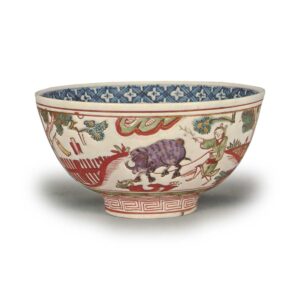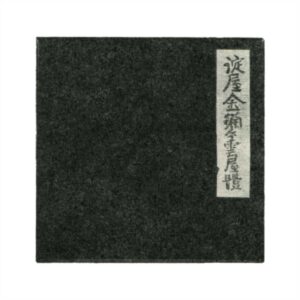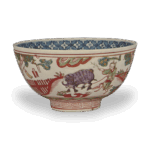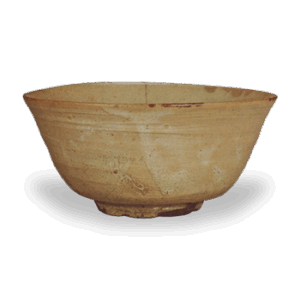

Accessories: Box with black lacquered paper label
Provenance: Yodoya Tatsugoro
Listed in: Taisho Meiki Kan
Dimensions:
Height: 6.3 cm Mouth diameter: 11.9 cm Base diameter: 4.7 cm Foot height: 0.8 cm Weight: 154 g
It is said that colored porcelain became most actively produced in Jingdezhen after the Ming Dynasty, particularly around the time of the Jiajing period. While both imperial kilns and private kilns produced a significant amount, there were private kilns that were particularly skilled in red-painted designs. This kiln is the one that produced the gold flake-decorated pieces that have survived to this day. Among the gold-inlaid pieces, there are various types such as red-painted gold-inlaid and sprouting gold-inlaid, differing in color tones, but it is likely that all were produced in the same kiln.
This is because the shape of this Yodoya gold-inlaid bowl is clearly the same as that of other gold-inlaid lidded tea bowls. It was probably originally a lidded tea bowl that lost its lid over time and came to be used as a tea bowl.
The inner rim decoration is painted in a darker glaze as expected, while the outer surface features only colored painting without glaze. The design is an arrangement of a Zen-inspired ox herding scene, evoking the style of Hyōitsu.
In addition to red, yellow, green, and blue, the piece unusually incorporates purple, with gold accents applied to the ox’s body and other areas. This is a renowned piece attributed to the Yodoya family, a prominent merchant of Osaka.
Box, black lacquer, with label








